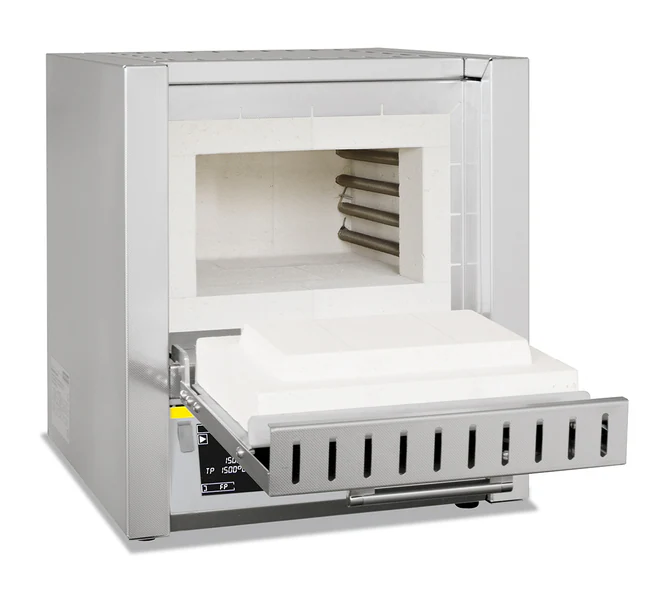A muffle furnace is a device that can heat and sterilize different materials at high temperatures. It is a safe and reliable option for many industrial applications, such as ceramic processing and heat treatment.
Muffle furnaces are often made of a material that can withstand high temperatures, such as kanthal or nichrome. They are also equipped with a control system to allow for precise temperature control.
Heat Transfer
The muffle furnace uses ceramic insulation which helps to transfer heat from the heating element to the main chamber. This also allows the element to have a long life, as it is not in contact with the vapors and gases emitted inside the chamber. This feature is beneficial as it can reduce maintenance costs.
Today, electrical muffle furnaces use a high-temperature heating coil inside an insulated chamber. They then apply convection, blackbody radiation, or a combination of both to heat the material in the chamber. This method eliminates combustion byproducts, such as gasses and flying ash, that were common in non-electric muffle furnaces of the past.
This type of furnace is ideal for high-temperature applications that require a longer warm-up time than would be possible using an open flame. It is also ideal for applications requiring precise temperature control.
Modern muffle furnaces have easy-to-use digital controls, making them convenient for users with little or no technical knowledge. In addition to this, they have a low proportional energy consumption and can reach a higher working temperature than older models. This makes them a practical product that can be used in many different industries. For example, they can be used in laboratories for fusing glass and creating enamel coatings or technical ceramics. They can also be used to heat and treat metals and alloys, such as hardening, tempering, annealing, or normalizing them.
Temperature Control
Muffle furnaces provide precise temperature control and an isolated environment for testing and processing materials. They also have a fast warm-up time and reach their maximum operating temperature quickly, making them an efficient choice for use in laboratory settings.
A Muffle furnace uses a combination of heating elements, thermal insulation, and mechanical arrangement to heat the material. The heat generated by the heating elements is transferred to the sample through a thermally efficient ceramic layer, which ensures uniform temperatures across the chamber. The temperature controller monitors the ambient temperature and adjusts the power supply to the heating elements accordingly. This helps prevent overheating or underheating of the samples, ensuring a consistent and accurate testing result.
The user can set the desired temperature using the designated temperature adjustment buttons. Once the desired temperature is selected, the digital display on the control panel will indicate that the furnace has reached the chosen setpoint. Once the required temperature has been achieved, the furnace will automatically adjust its heating components to maintain the desired temperature.
Muffle furnaces are used in quality assurance laboratories to verify the properties of materials, ensuring that they meet the required standards. They are also useful for environmental testing, simulating high-temperature environments to determine how a material will perform under different conditions. The low cost and easy operation of a muffle furnace make it an ideal choice for many applications.
Safety
Muffle furnaces are typically easy to use, and they come with a variety of safety features to ensure user safety. They also have a high-temperature capacity, making them ideal for applications such as ashing and heat treatment of materials. They’re also highly durable, with sturdy construction and heat-resistant materials.
When choosing a muffle furnace, you’ll want to consider factors like the maximum temperature, number of samples, crucible size, input voltage, chamber size, material, and safety features. It’s also important to consult with an experienced furnace supplier to ensure you select the best type for your application.
While muffle furnaces are safe to use, it is important to follow proper operating procedures and take precautions when working with them. This includes ensuring that the working environment is free of flammable substrates and explosive substances. It’s also important to avoid putting liquid samples such as water and oil directly in the furnace.
In addition, users should wear gloves and protective eyewear when handling the muffle furnace. It’s also recommended to avoid touching the door or handle of the muffle furnace with bare hands, and it is important not to bump or disturb the thermocouple located in the back of the furnace. Lastly, users should always turn off and unplug the muffle furnace when finished to prevent damage or injury.
Applications
A muffle furnace is used in a variety of different applications to test the properties of materials at high temperatures. It’s an essential tool for many manufacturing industries, including glass, ceramics, and metal production. A standard muffle furnace has an interior chamber and housing for placing the material to be tested, which is heated from above by a metal plate or crucible. The resulting heat is transferred to the sample through the walls of the furnace and the surrounding insulating material.
Muffle furnaces have various temperature capacities ranging from low to above 1800 degrees Celsius. The most popular types of this device include front-loading boxes and tube-style furnaces. They are used for various high-temperature applications, such as making enamel coatings, technical ceramics, and melting glass. They’re also employed in several analysis facilities to figure out the proportion of non-combustible and non-volatile ash content present in a sample.
The best muffle furnaces are made using a stainless steel refractory lining that is durable and has an insulation layer to reduce the time needed to reach the desired temperature. They’re easy to operate and come with a digital readout of the chamber temperature. They’re also built with a drop-down door and a Chromel-Alumel thermocouple circuit. This allows the chemist to easily load and unload samples. In addition, these devices come with a safety switch to prevent overheating and fire hazards.



